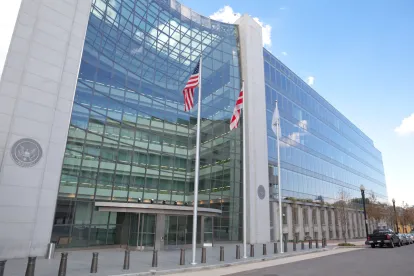On September 6, 2019, the Securities and Exchange Commission (SEC) announced two significant changes to its approach to responding to public companies’ no-action requests seeking support for excluding shareholder proposals from company proxy materials pursuant to Rule 14a-8: (1) the SEC will now respond to some requests orally, and (2) the SEC may decline to state a view with respect to some requests. View the SEC’s announcement on the Securities and Exchange Commission website. These changes will inject additional uncertainty into the shareholder proposal process in the next proxy season. On a more positive note, the SEC may in the near future propose amendments to Rule 14a-8 increasing the thresholds for submission and resubmission of shareholder proposals.
Background of the Rule 14a-8 No-Action Process
Rule 14a-8 regulates the circumstances under which a public company must include a shareholder proposal in the company’s proxy materials for a meeting of its shareholders. The rule sets forth various procedural and substantive requirements that may give the company one or more grounds to exclude such a proposal. Under the rule, a company that intends to exclude a shareholder proposal from its proxy materials must file its reasons with the SEC no later than 80 calendar days before it files its definitive proxy materials with the SEC.
Although the rule only requires companies to file their reasons for exclusion with the SEC, companies have developed a practice of submitting no-action requests in conjunction with these submissions. The no-action requests ask the Staff of the SEC to concur with the company’s position that it has proper grounds under Rule 14a-8 to exclude the shareholder proposal, and to conclude that the Staff would not recommend that the SEC take enforcement action against the company for excluding the proposal. The Staff historically has responded in writing to almost all of these requests, either concurring or disagreeing with the company’s reasons for exclusion. While the Staff’s response represents only an informal interpretation of the rule and is not binding, companies and shareholder proponents typically proceed in accordance with the Staff’s response. The Staff has in the past acknowledged that while it is not required to respond, it does so to “assist both companies and shareholders in complying with the proxy rules.” Because the SEC makes no-action responses public, these responses also provide assistance to other companies dealing with similar situations.
Changes to the Process
The SEC’s announcement made two major changes to this no-action process:
-
First, rather than responding in writing, the Staff may now respond orally. The announcement states that the Staff “intends to issue a response letter where it believes doing so would provide value, such as more broadly applicable guidance about complying with Rule 14a-8.”
-
Second, instead of concurring or disagreeing with the company’s asserted grounds for exclusion, the Staff may in some instances decline to state a view at all. The announcement emphasizes that if the Staff declines to state a view, the parties “should not interpret that position as indicating that the proposal must be included. In such circumstances the [S]taff is not taking a position on the merits of the arguments made, and the company may have a valid legal basis to exclude the proposal under Rule 14a-8.” The Staff also reminded companies and shareholder proponents that they may continue to seek formal, binding adjudication on the merits in court.
The SEC’s announcement also reiterated its position that an analysis by a company’s board of directors “is often useful” when a company seeks to exclude a shareholder proposal pursuant to Rule 14a-8 on the basis that the proposal is not significantly related to the company’s business (Rule 14a-8(i)(5)) or that it deals with the company’s ordinary business operations (Rule 14a-8(i)(7)).
Practical Considerations
As the announcement gives no indication of the types of proposals on which the Staff may decline to state a view, companies are still likely to submit no-action requests. In cases where the Staff declines to state a view, companies will face a more difficult decision regarding whether to exclude the proposal. Though the parties may litigate the matter in court, the courts cannot necessarily be expected to adjudicate shareholder proposal disputes quickly enough to accommodate the proxy season timeline. Companies will be forced to consider the strength of their grounds for exclusion, risks and costs of litigation, risks that litigation would impose on the process for and timing of their shareholders’ meetings, the fact that Rule 14a-8 places the burden of proof on the company to show that a shareholder proposal is not proper for inclusion in the company’s proxy materials, and the potential reactions of investors and proxy advisory firms, among other things.
As for oral responses, the Staff has not indicated whether or how oral responses will be publicly disclosed nor whether the Staff will orally provide the legal basis for its decision. Accordingly, it appears that oral responses will provide less transparency and less guidance for companies facing similar situations in the future.
The SEC’s announcement adds uncertainty to the shareholder proposal process that will impact the next proxy season and, depending upon how the changes are implemented in practice, future proxy seasons as well. As such, the changes appear likely to increase costs for companies seeking to comply with Rule 14a-8.
Potential Changes to Shareholder Proposal Submission and Resubmission Thresholds
The SEC’s Spring 2019 Regulatory Flexibility Agenda indicated that the SEC may in the near future propose to amend Rule 14a-8 regarding shareholder proposal submission thresholds. Currently, to be eligible to submit a proposal, a shareholder must have continuously held, for at least one year, at least $2,000 in market value, or 1 percent, of the company’s securities that are entitled to be voted on the proposal at the meeting. In order for a proposal to be eligible for resubmission, if a proposal has been included in the company’s proxy materials within the preceding five calendar years, a company may exclude the proposal from its proxy materials for any meeting held within three calendar years of the last time it was included if the proposal received less than 3 percent of the vote if proposed once, less than 6 percent of the vote if proposed twice, or less than 10 percent of the vote if proposed three times or more, within the preceding five calendar years. It is widely expected that the SEC will propose raising both the submission and resubmission thresholds for shareholder proposals, although whether it will do so, when, and how remains to be seen.





 />i
/>i

